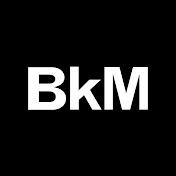
Knife Blade
ca. 1353-1329 B.C.E.
Maker Unknown
Egyptian, Classical, Ancient Near Eastern Art
Egyptian Metalwork
Egyptian artisans used both local and imported metals to make jewelry, vessels, tools, and other objects like the ones displayed here.
Gold existed as a pure metal in the desert east of Luxor and farther south in Nubia, whose name means “Gold Land,” but silver had to be imported from Crete, Cyprus, and Mesopotamia. Most electrum (a natural alloy of gold and silver) was brought from Nubia, but some was made in Egypt. Copper was the most commonly used metal in ancient Egypt.
Beginning in the late Middle Kingdom or shortly thereafter, workers learned how to produce bronze, an alloy of copper and tin, from metalsmiths in western Asia. By the New Kingdom, metalworkers had mastered techniques that are still practiced today, including hammering, soldering, burnishing, engraving, repoussé (creating a raised image on a metal sheet), sheetworking, and casting. In sheetworking—used to make bowls, basins, and some thin jewelry— rough metal slabs called ingots were hammered into thin sheets and shaped into the desired form. Individual sheets could be joined with rivets or by soldering. Workers made tools, statues, and thick jewelry such as rings by pouring molten metal into molds. While many Middle Kingdom objects were solid cast, by the end of the period artisans had learned the lost-wax method of casting, producing hollow metal pieces around a clay core.
Egyptian artisans used both local and imported metals to make jewelry, vessels, tools, and other objects like the ones displayed here.
Gold existed as a pure metal in the desert east of Luxor and farther south in Nubia, whose name means “Gold Land,” but silver had to be imported from Crete, Cyprus, and Mesopotamia. Most electrum (a natural alloy of gold and silver) was brought from Nubia, but some was made in Egypt. Copper was the most commonly used metal in ancient Egypt.
Beginning in the late Middle Kingdom or shortly thereafter, workers learned how to produce bronze, an alloy of copper and tin, from metalsmiths in western Asia. By the New Kingdom, metalworkers had mastered techniques that are still practiced today, including hammering, soldering, burnishing, engraving, repoussé (creating a raised image on a metal sheet), sheetworking, and casting. In sheetworking—used to make bowls, basins, and some thin jewelry— rough metal slabs called ingots were hammered into thin sheets and shaped into the desired form. Individual sheets could be joined with rivets or by soldering. Workers made tools, statues, and thick jewelry such as rings by pouring molten metal into molds. While many Middle Kingdom objects were solid cast, by the end of the period artisans had learned the lost-wax method of casting, producing hollow metal pieces around a clay core.
- Maker/Artist
- Maker Unknown
- Classification
- Tool
- Formatted Medium
- Bronze
- Medium
- bronze
- Locations
- Place excavated: Tell el-Amarna, Egypt
- Dynasty
- Dynasty 18
- Dimensions
- 13/16 x 3 3/4 in. (2 x 9.6 cm)
- Accession Number
- 25.848
- Credit Line
- Gift of the Egypt Exploration Society
- Exhibitions
- Egypt Reborn: Art for Eternity, Ancient Egyptian Art
- Rights Statement
- Creative Commons-BY
- Museum Location
- Egyptian Orientation Gallery, 3rd Floor
Have a concern, a correction, or something to add?












